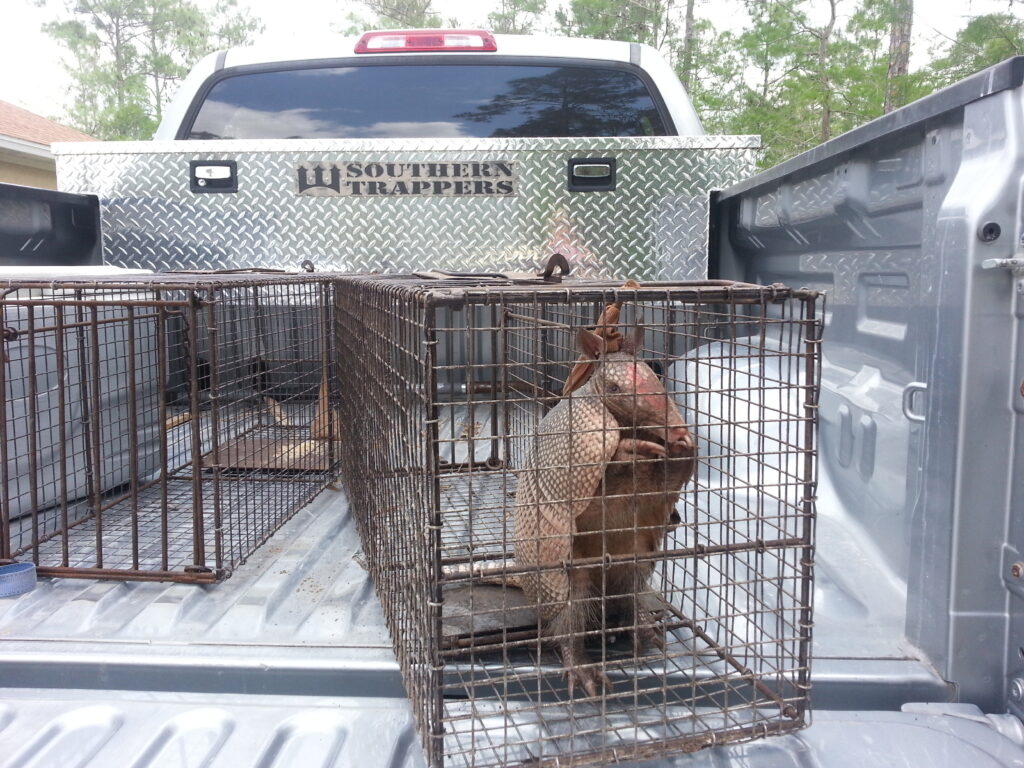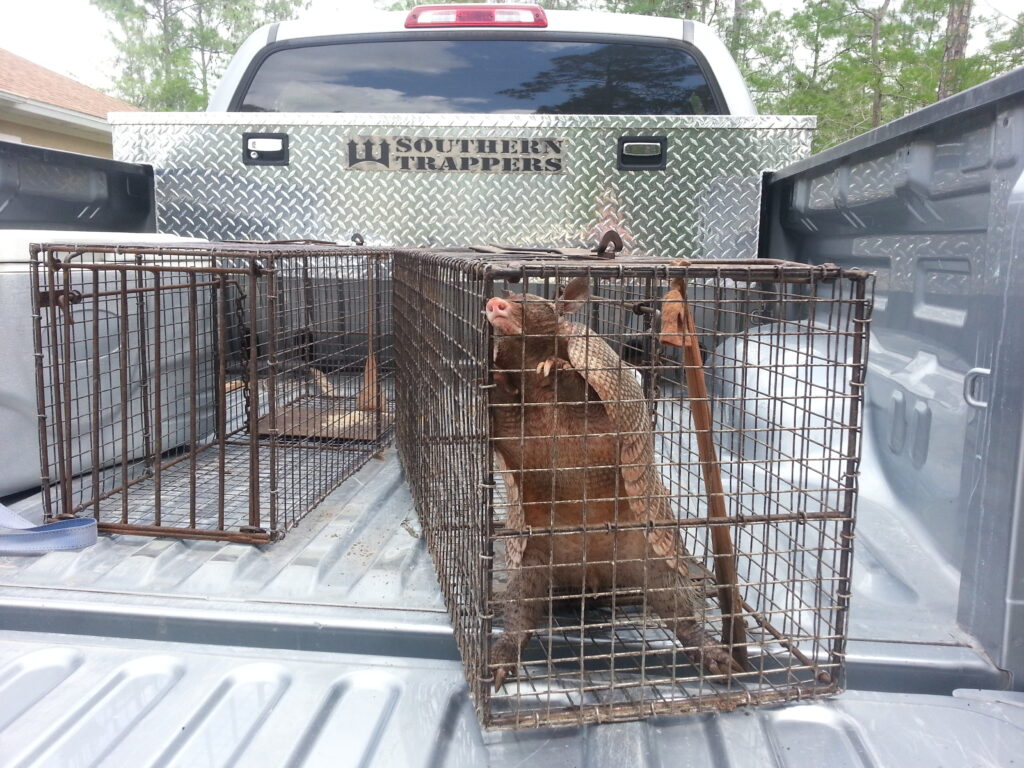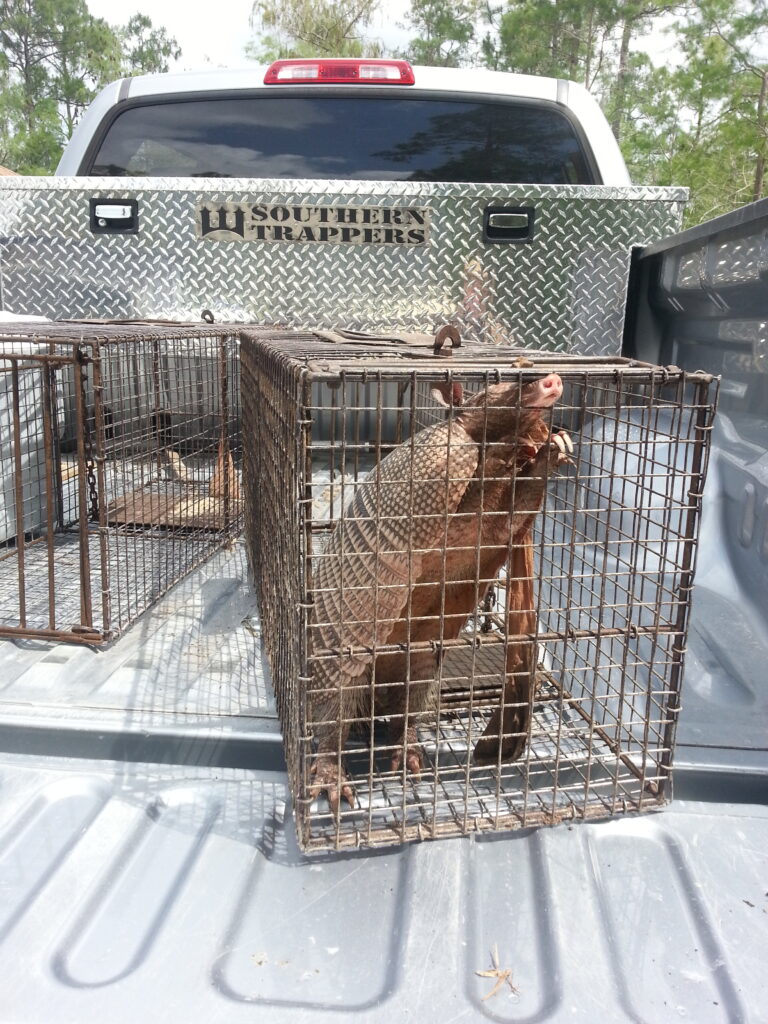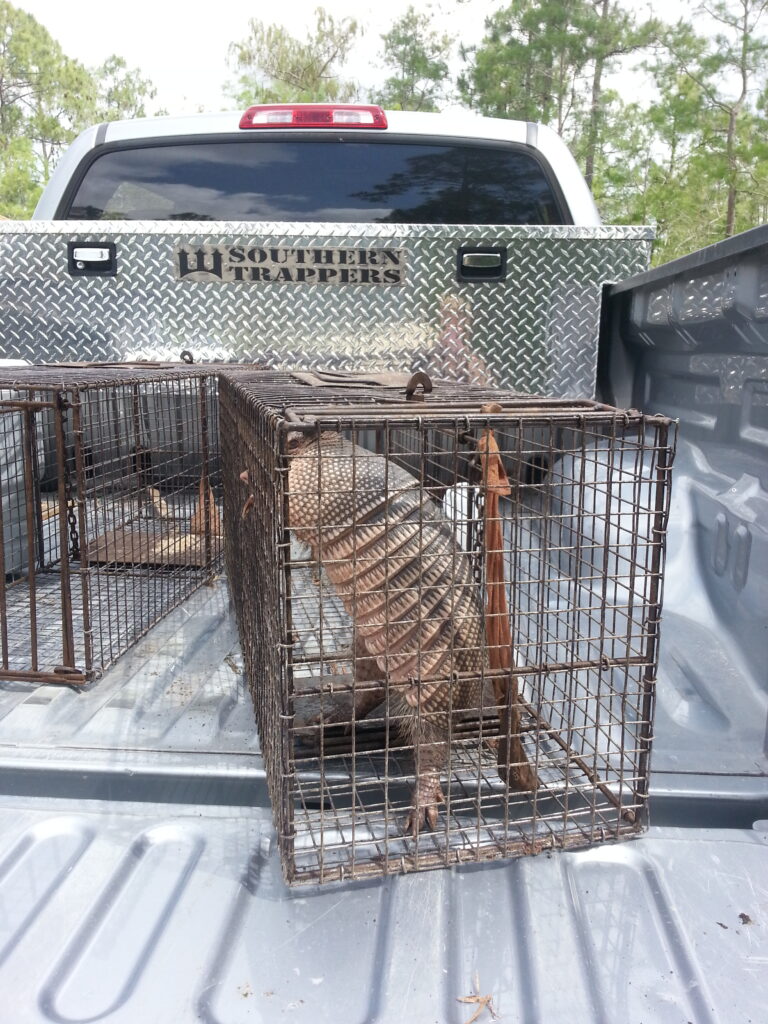
Nine-Banded Armadillo: (Dasypus novemcinctus)
Nine-banded armadillo, commonly known as armadillo; is part of the dasypondisae family. The nine-banded armadillo averages in size between 26 to 53 inches long including the tail length, weighing 5 to 14 pounds. The nine-banded armadillo was introduced to Florida in the 1900 from Texas.
They have a protective brown-silver colored armor which covers its head, body and tail. Which does not cover the ears or the under body. The protective shield has nine flexible rings allowing them to curl. Its head is small and elongated. The nose and eyes are small and the ears are oval shaped. They have peg-like small teeth. Their claws are long and sharp; its legs are short which have a layer of coarse hair.
Armadillos are found throughout the state of Florida. Their preferred habitats have loose soils, such as wooded or semi-wooded areas; this also includes suburban and urban areas. Armadillos are temperate species and prefer environments that are rainy and warm. They dig burrows for their dens. One armadillo can have several burrows with multiple entrances which are protected by trees, stumps, palmetto, plants and shrubs.
Armadillos are nocturnal and usually hunt during the night. Primarily feed on ants, termites, other insects and plant materials.
Armadillos are sedentary and solitary. They are extensive burrows; just one armadillo can maintain 15 burrows in its territory. These burrows can range between 10 inches wide to 12 foot deep and 30 foot long. They mark these burrows with their urine, feces and excretions using their scent glands. Female armadillos have exclusively well defined territories as for the male armadillos territories they are much larger than the females; although they do overlap the females territories. Armadillos have very poor eye sight, they utilize their sense of smell to hunt. If they need to cross any size body of water they can walk on the bottom of the water or they can inflate their stomach to twice its size and “float across large bodies of water.
Armadillos mate in the summer months. The females always give birth to identical quadruplets, due to one egg splitting into four identical offspring, which are either all male or all female. Once the offspring are born, the same day the begin to follow their mother. When startled or being pursued by a predator the armadillo flees with amazing speeds, jumping high in the air, running to one of its many dens. If it’s unable to flee it will quickly begin to dig a shallow burrow and lodge itself inside protecting it from the predator.
Armadillos are also known to carry leprosy, which can be transmitted on occasion through their claws making contact with skin. They also transmit salmonella. They could also be infected with rabies, this as well can be transmitted to humans.
The damage armadillos cause when burrowing underground can be devastating. In some cases causing extensive damage to pool decks, underground plumbing, foundations, irrigation systems, underground wells, lawns, plants, shrubs, ornamental.


